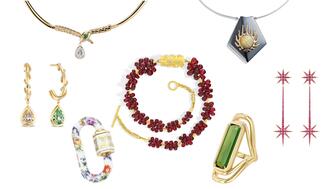Associate Editor Natalie Francisco plays favorites with Piece of the Week, selecting a standout piece of jewelry from each month of 2025.
Study: Young Consumers Are Demanding Loyalty from Brands
Here are four rules of loyalty from millennials and members of Gen Z, according to a recent survey from Alliance Data.
Columbus, Ohio--With technology providing so many options at their fingertips, millennials and Generation Z are looking at brand loyalty in new ways, according to a recent survey.
In its study, “The Rules of NextGen Loyalty,” Alliance Data looked at how Gen Z and millennials engage with brands and define loyalty.
The study, conducted by Alliance Data’s Analytics & Insights Institute, used a combination of qualitative and quantitative research methods to delve into what brand loyalty means for older millennials (those born between 1982 and 1989), younger millennials (born between 1990 and 1997) and Generation Z (born between 1998 and 2010).
Both generations have grown up with instant access to information and brands, which has greatly influenced their decision-making. Yet they haven’t abandoned the more traditional forms of engagement, and are finding ways to combine the digital experience with in-store visits, Alliance Data found.
Here are four rules of “NextGen” loyalty the firm discovered as a result of its study.
1. Loyalty is earned.
Because today’s younger consumers have so many options available to them with instant access to information online, they also can be more selective when it comes to where and how they shop.
They’re comfortable doing so both online and in-store and expect a consistent experience from brands across all channels.
According to the study, 63 percent of young consumers agree that since they have so many choices of where to shop, a brand must show them loyalty to earn their business.
For 43 percent of Gen Z, that means a brand must be accommodating to their needs. The same is true for 34 percent of younger millennials and 33 percent of older millennials.
Fifty-five percent of older millennials said they rarely purchase something different if they like a brand, and 53 percent of younger millennials and 51 percent of Gen Z said the same thing.
Brands need to recognize the unique motivations of Gen Z and millennials as the first step in building brand connectivity and earning their loyalty, Alliance Data said.
Price and quality are the top influencers for younger consumers when deciding among brands, but once those two factors are removed, selection and convenience are the most important factors.
Gen Z and older millennials also value consistency in product while younger millennials value rewards programs.
2. Loyalty is complex.
Loyalty has been viewed, traditionally, as one-dimensional.
But Alliance Data
For all three age groups surveyed, trustworthiness, honesty and reliability are at the core of loyalty in general. But when it comes to brand loyalty, there are a number of other factors coming into play.
For millennials, it’s also based on rewards, quality, discounts, reliability and coupons, among other things. For Gen Z, brand loyalty is described by the terms quality, reliability, discounts, and rewards.
Other notable aspects popped up for all groups like helpfulness, free shipping and convenience.
3. Loyalty is fragile.
Younger consumers expect great service and a great experience across all channels, and if those expectations aren’t met, they won’t hesitate to take action and voice their opinion.
In fact, 76 percent of younger consumers only give brands two to three chances before they stop shopping with them. One in three consumers, meanwhile, said nothing could be done for a brand to win them back.
Alliance Data said that to keep these consumers happy, “remember that beyond price and quality, (they) expect good service and a great experience.”
Not surprisingly, the demographics surveyed are also heavily influenced by social media. Thirty-five percent keep up with the brands they like on social media. 34 percent of Gen Z members, 29 percent of younger millennials and 26 percent of older millennials said they are influenced by bloggers and YouTubers on what to purchase.
This means they’re also more likely to be influenced by reviews and posts about a brand, and also to express their pleasure (or displeasure) over an experience.
4. Loyalty is multifaceted.
Transactions and sales should no longer be the only measure of loyalty, since it is now a combination of both function and emotion.
Once more emotional elements are introduced by a brand—like shopping options that make consumers’ lives easier, offering exclusive products, or even factors like making personal recommendations or showing they are socially responsible—it then moves past traditional brand loyalty and into aspirational territory.
Alliance Data said brands need to understand customers’ unique needs and think differently about measuring loyalty, understanding some customers only require basic service elements, while others need more.
Being able to measure young consumers’ loyalty and how they’re prioritizing certain values can help differentiate consumers to better target and earn their business.
The Latest

The “Love and Desire” campaign is inspired by the magic that follows when one’s heart leads the way, said the brand.

Two awardees will receive free tuition for an educational course at the Swiss lab, with flights and lodging included.

How Jewelers of America’s 20 Under 40 are leading to ensure a brighter future for the jewelry industry.

Berta de Pablos-Barbier will replace Alexander Lacik at the start of January, two months earlier than expected.

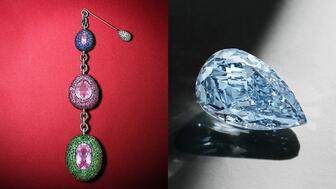
Sotheby’s held its first two jewelry sales at the Breuer building last week, and they totaled nearly $44 million.

Winners will receive free registration and lodging for its fourth annual event in Detroit.

Roseco’s 704-page catalog showcases new lab-grown diamonds, findings, tools & more—available in print or interactive digital editions.

Here are six ideas for making more engaging content for Instagram Reels and TikTok, courtesy of Duvall O’Steen and Jen Cullen Williams.

The honorees include a notable jewelry brand, an industry veteran, and an independent retailer.

Carlos Jose Hernandez and Joshua Zuazo were sentenced to life without the possibility of parole in the 2024 murder of Hussein “Sam” Murray.

Yood will serve alongside Eduard Stefanescu, the sustainability manager for C.Hafner, a precious metals refiner in Germany.

The New Orleans jeweler is also hosting pop-up jewelry boutiques in New York City and Dallas.

Set in a Tiffany & Co. necklace, it sold for $4.2 million, the highest price and price per carat paid for a Paraíba tourmaline at auction.

The jeweler’s “Deep Freeze” display showcases its iconic jewelry designs frozen in a vintage icebox.
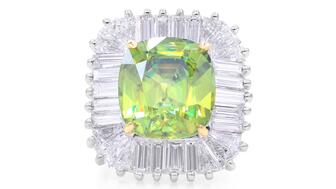
Take luxury gifting to new heights this holiday season with the jeweler’s showstopping 12-carat sphene ring.

This year's theme is “Unveiling the Depths of the Ocean.”

In its annual report, Pinterest noted an increase in searches for brooches, heirloom jewelry, and ‘80s luxury.

Starting Jan. 1, customers can request the service for opal, peridot, and demantoid garnet.

The 111-year-old retailer celebrated the opening of its new location in Salem, New Hampshire, which is its third store in the state.

The new catalog features its most popular chains as well as new styles.
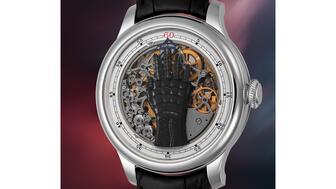
The filmmaker’s personal F.P. Journe “FFC” prototype was the star of Phillips’ recent record-setting watch auction in New York.

The new location in the Design District pays homage to Miami’s Art Deco heritage and its connection to the ocean.

“Longtime favorite” presenters, as well as first-time speakers, will lead talks and workshops at the annual event in Tucson next year.
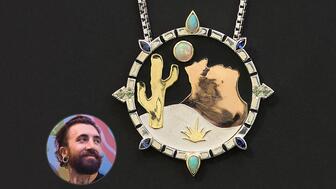
Silas Smith of Meridian Metalworks won the challenge with his pendant that blends Australian and American landscapes.

The sale of the 31.68-carat, sunset-hued stone was part of Sotheby’s first series of events and auctions in Abu Dhabi.

Most customers who walk into your store this month have made up their minds. Your job is to validate their choice, Emmanuel Raheb writes.














